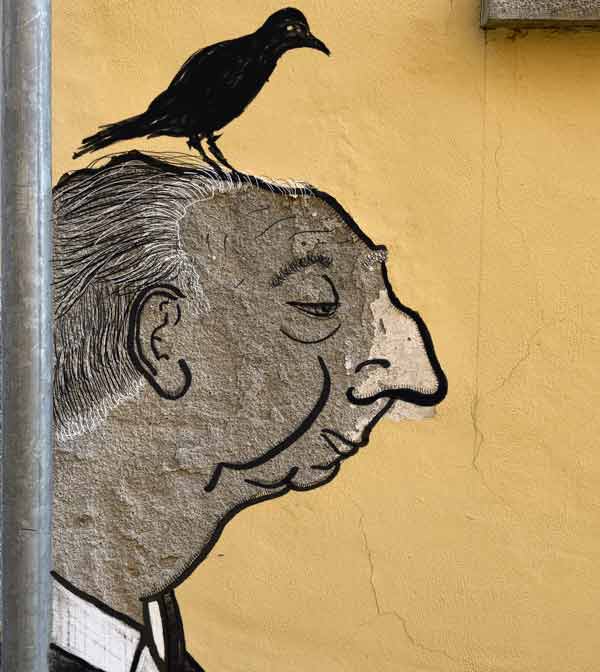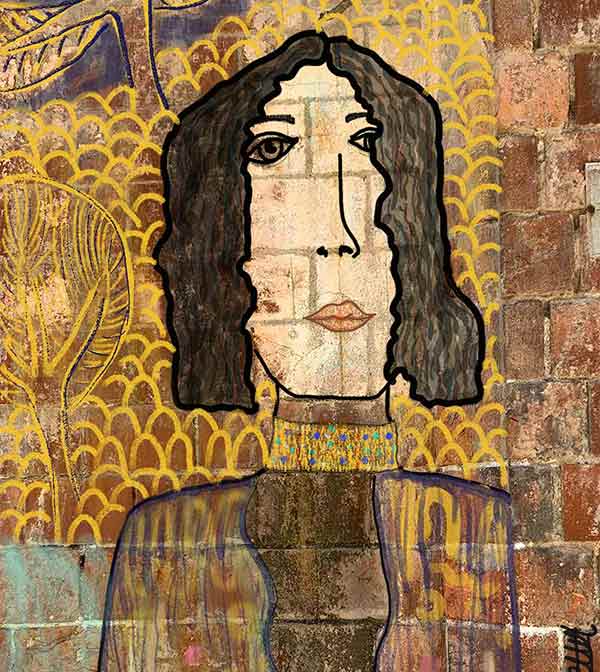CUNEO
CUNEO
THE GREAT ART.
The first Details Project Residency was held from March 20 to 28, 2023, thanks to the Mirabilia Festival and the Performing Lands project.
For the first time they tried to work on the construction of a path and for the first time they worked with local people; the macro area identified was Cuneo Centro Storico.
The work done with local people as well as the meeting with Giovanni Cerruti, an expert in local history, were fundamental to the evolution of the creation.
Edmondo De Amicis spent several years of his life in Cuneo; the great Totò boasted in one of his films that he had served in the military in this very town, which now commemorates him with a statue; Ernest Hemingway was a fan of the typical sweets “Cuneesi al rum.”
All these inputs combined with what various spots suggested gave rise to a narrative of the itinerary that features the presence of great international artists who precisely from Cuneo have taken inspiration for their works that, in different artistic fields, are now famous all over the world.
We then came across works by Klimt, Munch, Cimabue, Botticelli, film fragments by Alfred Hitchcock, sketches by Walter Disney, etc….
PATH IN AUTONOMY
See the 13 simple rules to follow during urban exploration.
Dear explorers, dear explorers, welcome and welcome to the Details #Cuneo “La Granda Arte” itinerary.
By placing the cursor over each point you will be able to consult the rules for walking the route correctly.
Enjoy your exploration!
If you enjoyed the experience, follow us on social channels related to @details .
Don’t stop exploring, and at the end of all our going we will return to the starting point and know that place for the first time.
Four Quartets – T. S. Eliot.
DEPARTURE
Start the route from No. 1 and continue to the end.
RESPECT
Respect the community you are exploring, whether it is public or private property.
INTERPRET
Before framing the Qr Code try your own interpretation of the stain.
If you are with amicihe or family members, do this exercise as a group.
POINT OF VIEW.
Look at the stain up close and from a distance.
Change the point of view!
SCAN THE QR
Scan the Qr code with your internet-connected phone or tablet and look at the drawing.
Slide the cursor over the image with your finger to view the drawing.
ENJOY THE DETAILS
After looking at the design as a whole you can pinch the image to enlarge it.
Take the time to enjoy all the details.
Look without judging.
CONFRONT
Compare the drawing with the stain again by moving the cursor up and down.
This can also be done with the enlarged image.
CONTINUE
When you feel satisfied proceed to the next spot.
If you do not have a paper map help yourself by opening the map link found in the relevant route on the website.
STORIES
Pay attention to the micro and macro stories around you.
LOOK UP
Occasionally look up, if there are beautiful clouds pause to look at them!
THE OBSTACLE.
Along the way you will encounter "an obstacle" -- a mistake.
Will you be able to face it and solve it?
REINVENE
Along the way you will encounter many other peeling walls, if you have time and desire have fun reinventing them.
FOCUS
Along the way try to stay focused on this activity and try not to talk about ...soccer, cars, video games, shopping, food (...).
THE PATH.
BELOW ARE THE VISUALIZABLE IMAGES ALONG THE Details route in Cuneo: La Granda Arte!!!
By clicking on the image the work will be opened in full screen you can view the imperfection of the wall before and after the artistic intervention.
Click on the image to view full screen before and after.
Click on the image to open the video in a popup.
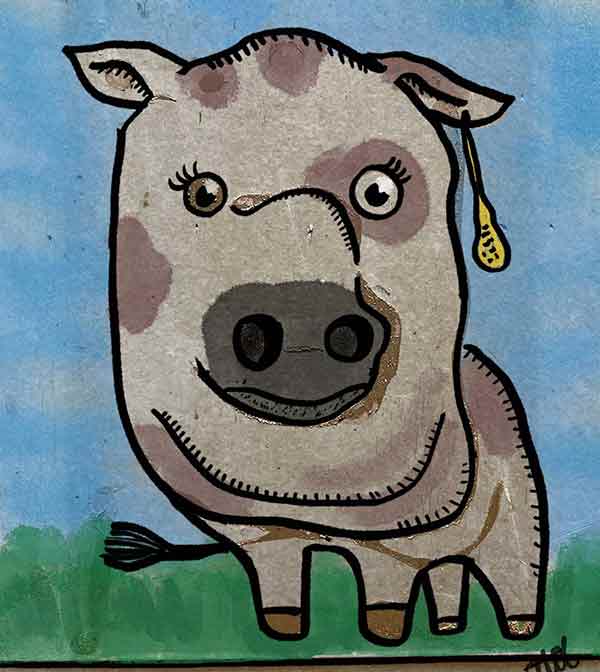
Breedings
Piedmont is second in Italy for cattle breeding…as is also clearly seen from this spot….
—————–

SCRIPT
This is the result!!!
How about you?
What would be so urgent and important for you to write on a wall?
—————–
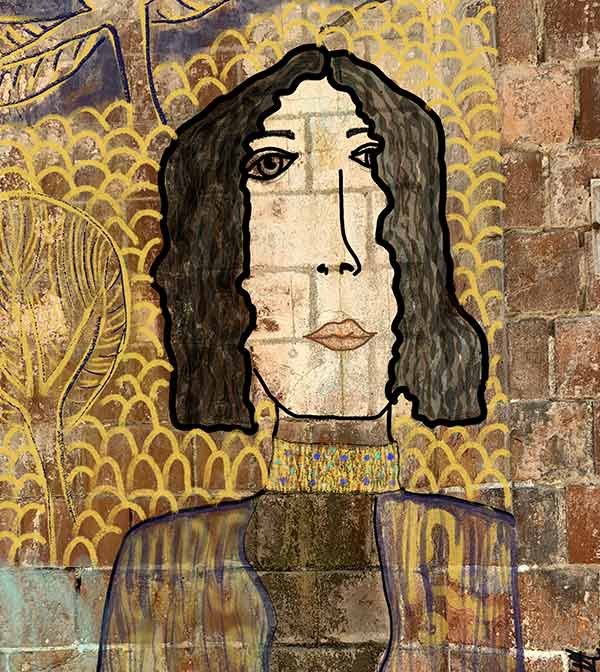
Klimt
The first building dates back to the 1300s but the hospital was inaugurated in the late 1500s.
But the later wrought-iron decorations of the door canopy take us artistically back to the Art Nouveau style of the late 19th century.
In particular, the iron cross above that decoration has been seen by many – mistakenly – as a symbol of the Hospital.
It is actually a clear reference to the City of Vienna, whose symbol is precisely a cross.
In fact, at the beginning of his career, the painter Gustav Klimt, father of Viennese Secessionism, stayed in Cuneo to take inspiration from Italian Art.
In this spot adjacent to the entrance can be seen the remains of one of his early frescoes, an early sketch of the very famous painting entitled Judith I from 1901.
A small cartouche on the door bears the very unmistakable signature of the great Viennese artist
—————–
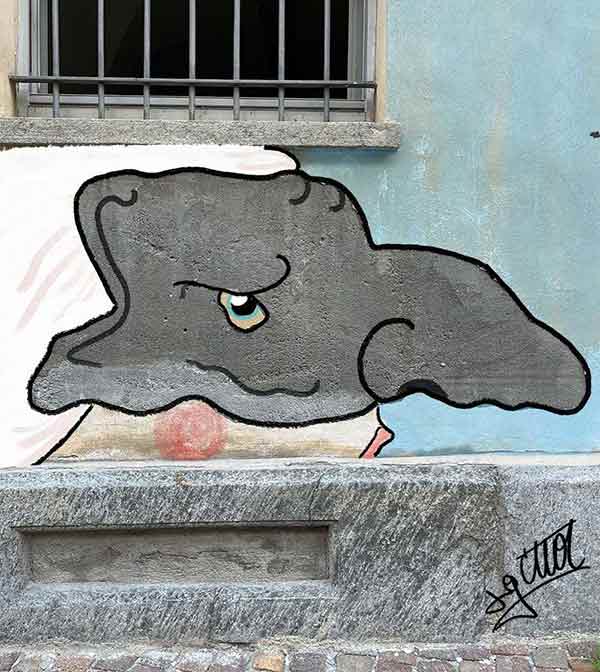
COMMEDIA DELL'ARTE
Each region had its own masks and characters.
The quintessential Piedmontese character is Gianduia, and in particular Gironi – Gianduia’s father – was born in Cuneo.
But sources say that the famous mask of Pulcinella takes its inspiration from Cuneo itself, from a peasant of Neapolitan origin who emigrated to the north.
—————–
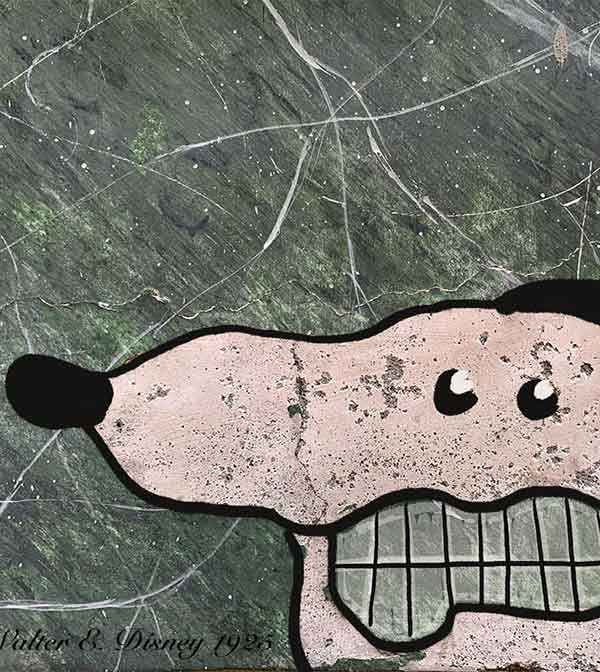
Mickey Mouse
It was the famous “Roaring Twenties” years in America.
In fact Disney had already started working on this character as early as 1925, as attested by this early sketch.
The idea came on a very first trip to Italy and specifically to Cuneo.
—————–

Walter Disney
The knowledge level of the Disney brand has always been higher here than elsewhere.
It is the Italian anomaly, and it is not a coincidence that Disney allowed Italy to produce it, making Topolino our little newspaper.
The only American comic strip that was not banned during fascism.
In 1961, on the occasion of the Unification centennial celebrations, Disney paid a visit to Fiat, “the factory that had created an automobile called Mickey Mouse, and he was regarded as a rock star.”
—————–

MAP CUNEO
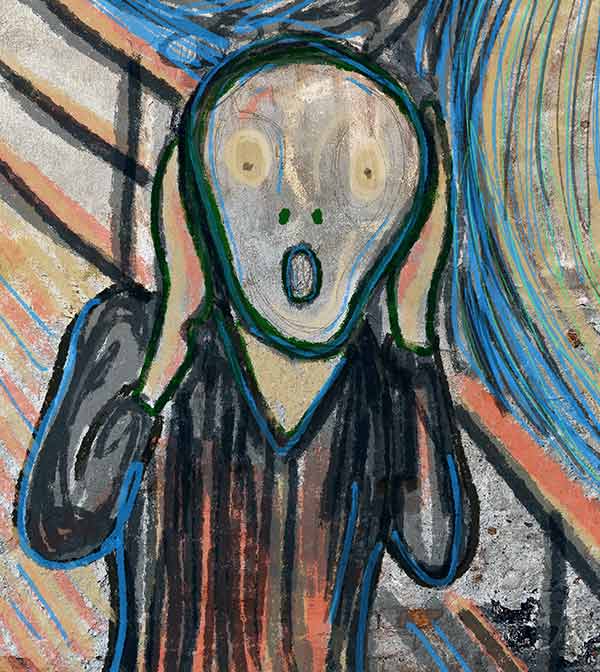
URLO
Munch made several versions and studies of this painting before arriving at the final version in 1893.
Here in Cuneo is one of the very first experiments, which Munch made on a Grand Tour of Italy.
Many art historians disagree with this version, but an autographed scroll found in a wall recess next to this painting attests to its absolute veracity.
—————–
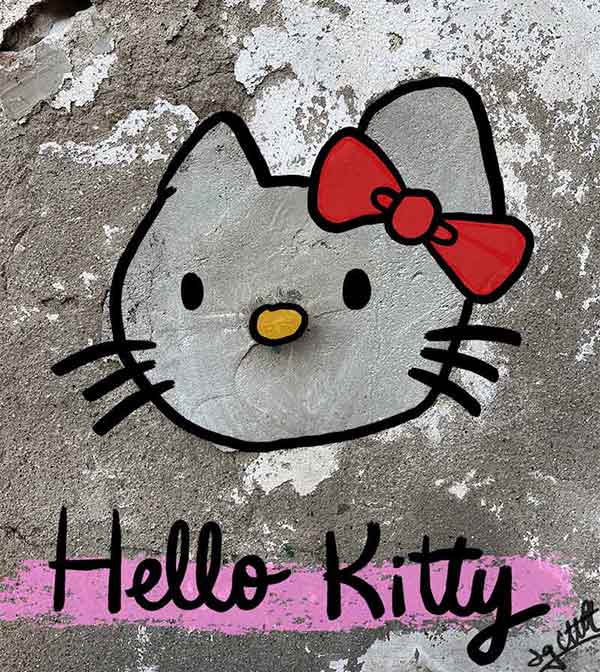
HELLO KITTY.
Her full name is Kitty White (a name inspired by the cat Kitty from the fantasy book Through the Looking Glass), she is British and lives in London, is of the sign of Scorpio, loves apple pies, has a twin sister, and is in the third grade, so she is about 8 years old.
—————–
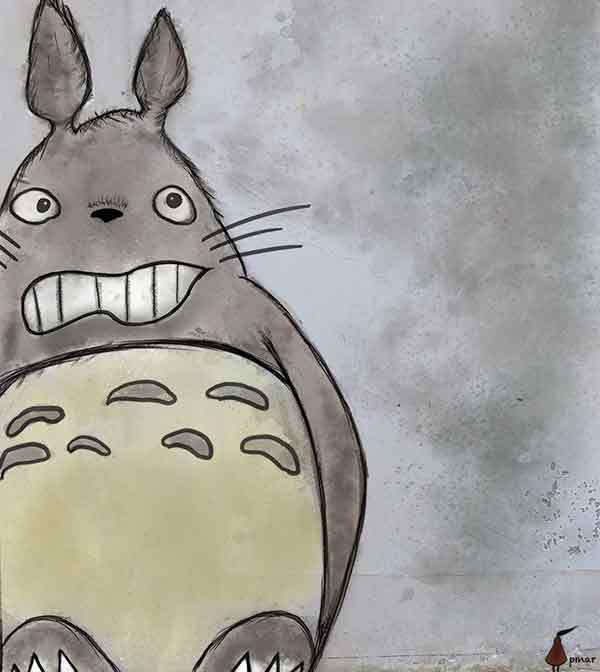
TOTORO
Totoro is the guardian of the forest, is a calm and good-natured being, loves to sleep, and can make himself invisible to everyone, showing himself only to those he actually wants.
The film was released in Japan in 1988, and was not released in Italy until 2009.
In 1973, Miyazaki and Takahata began a collaboration with Zuiyō Pictures, then Nippon Animation, working on some animated series related to Fuji TV’s World Masterpiece Theater] program, which featured year-long animated series based on Western novels of children’s literature.
He was entrusted with drawings and layouts in the three series of Heidi directed by Takahata and in 1975 “From the Apennines to the Andes,” one of the stories narrated in De Amicis’ book Cuore.
De Amicis himself, a writer from Turin, lived in Cuneo in 1862.
During the 1970s Miyazaki traveled first to Switzerland and then to Piedmont to study alpine landscapes and also visited Cuneo.
—————–

CLOWN FELLINI
The film begins with a semi-autobiographical memory of Fellini as a child.
Awakened in the middle of the night by noises, the child looks out the window and sees the huge tent they are putting up in the square.
The next morning they explain to him, “It’s the circus, and if you don’t be good I’ll have these gypsies take you away.”
Fascinated, the boy goes to explore the world under the big top and in the evening he goes to see the show for the first time but is frightened by it, especially the moment the clowns appear on stage.
From this kind of “trauma,” the director decided to undertake an investigation throughout Europe to understand and analyze the professional and historical figure of the clown.
For this documentary Fellini took no inspiration from Cuneo…but on the contrary, Fabrizio Gavosto took inspiration from Fellinifor his career as a Street Artist and later Director of the Miabilia Festival.
—————–
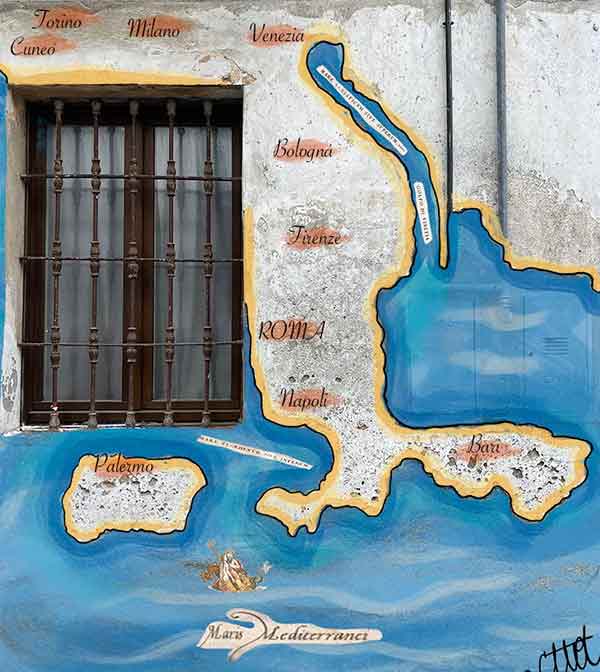
ITALY MAP
So wrote Ernest Hemingway in 1919 to his friend James Gamble, words full of affection that the author of “Farewell to Arms” and Nobel winner for “The Old Man and the Sea” felt for our country.
Hemingway first came to Italy in 1917, barely out of his teens, as a Red Cross volunteer, but in 1918 Hemingway was hit in both legs by shrapnel from an Austrian mortar shell; Transferred to the American hospital in Milan, he underwent numerous operations and there he fell in love with nurse Agnes von Kurowsky; love and the experience of war inspired the plot of “Farewell to Arms,” one of his most famous novels.
He returned to Italy again in 1921, crossing the Great St. Bernard Pass on foot: he wanted to go to the war sites where he had been wounded, but the post-war reconstruction disappointed him, he wrote: “A rebuilt city was much sadder than a devastated one. It was definitely like entering an empty theater after the audience and actors had left.”
In 1923 he began to frequent fashionable Cortina, staying at the Hotel Bellevue, like many other celebrities of the time.
A few years later, before marrying his second wife, Pauline Pfeiffer, he took a trip with his friend Guy Hickok from Rapallo to San Marino and then to Florence, Rimini, Imola, Bologna, Parma, Piacenza and Genoa.
After a long period of absence he returned to Italy in 1948 with his fourth wife, Mary Welsh.
Together they chose to live in Venice, a city that deeply inspired his creative vein.
In winter the couple went to Cortina for skiing and hunting trips.
In Venice, the writer became a habitué of Harry’s Bar: he had a table always reserved where he could write and drink dry martinis or glasses of Valpolicella, which Giuseppe Cipriani, the proprietor, had introduced him to and appreciated.
But the writer’s passion was cocktails, to the point that one was created just for him, the “Montgomery.”
He stayed at the sumptuous Gritti Palace Hotel where he often met celebrities such as Peggy Guggenheim, Elizabeth Taylor, and Richard Burton.
The presidential suite, where he used to stay, today bears his name.
In those years he also loved to frequent the Locanda Cipriani on the island of Torcello: it was here in 1950 that he finished writing his novel “Across the River and Into the Trees,” inspired by the lagoon magic of Venice and his overwhelming love for 18-year-old Adriana Ivancich, a noblewoman from Veneto.
For brief periods in 1952 he lived in the resort of Acciaroli on the Cilento coast; he traveled to Sicily and in 1953 went to Alassio, where he used to frequent the Caffè Roma.
It was 1954 when he arrived in Lignano Sabbiadoro, the resort bounded by the waters of the Adriatic, the Marano Lagoon and the mouth of the Tagliamento River.
Here Hemingway loved to go wild duck hunting along the Tagliamento River and was fascinated by the reed beds, casoni, wild pine forests and islets.
He called this place the “Italian Florida,” which he later portrayed in many of his novels.
In 1959 Hemingway made one last trip to Italy with anthropologist John Friedman.
He went on the advice of Pivano and Carlo Levi to Lucania and Puglia. With their friend they visited Aliano, a village nestled in the Lucanian Dolomites, Potenza and Matera, and traveled along the Basento River among hills and unspoiled landscapes.
“I would like to be buried up there, along the Brenta, where the great villas with lawns, gardens, plane trees, and cypresses stand.”
He wrote this in a manuscript but in reality, having died by suicide in Idaho, Hemingway has been resting in Ketchum Cemetery for 60 years.
The deep connection with Italy, however, remains immortalized in the pages of his works.
—————–
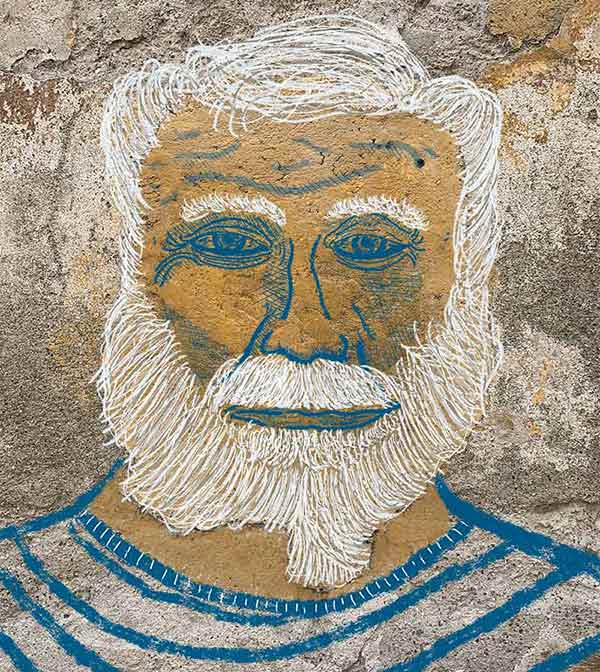
Hemingway
It was May 8, 1954, when at the counter of the Arione cafeteria, writer Ernest Hemingway ordered a glass of whiskey and a packet of rum Cuneesi.
The author of ‘The Old Man and the Sea,’ recommended by publisher and friend Arnoldo Mondadori, stopped by the café in Galimberti Square to taste the delicacy invented by Andrea Arione.
—————–

Hitchcock
In fact, it all starts in Genoa: Hitchcock’s first “clapperboard” for his first completed feature film took place on June 9, 1925 in the Ligurian capital itself.
The director – then a 26-year-old with only a couple of short films or unfinished works behind him – filmed the departure of a ship from the old maritime station for his “The Pleasure Garden,” but not everything on his trip to Italy went as planned.
On the contrary.
At the border (Hitchcock was arriving from Munich) his film was seized, while in Genoa all his money was stolen.
Also for this film he visited Lake Como, and from Genoa he also went to Cuneo, where seeing the number of pigeons invading the historic center he took an early inspiration for one of his greatest masterpieces, The Birds (The Birds) of 1963
—————–

HELL - FIRE
Not otherwise the cooks to their vassals make their meat muffle in the middle of the cauldron with hooks, that they may not galli.
—————–
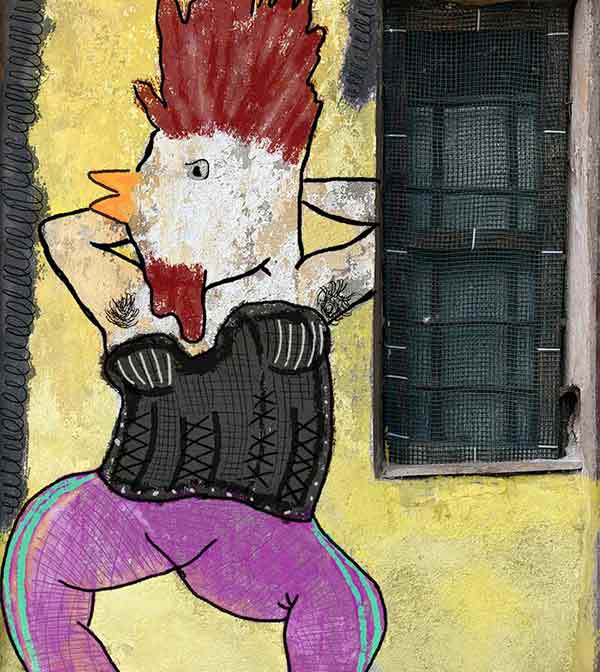
HELL - CONTEMPORARY CIRCUS ROOSTER
—————–

HELL - PROSTITUTION
—————–
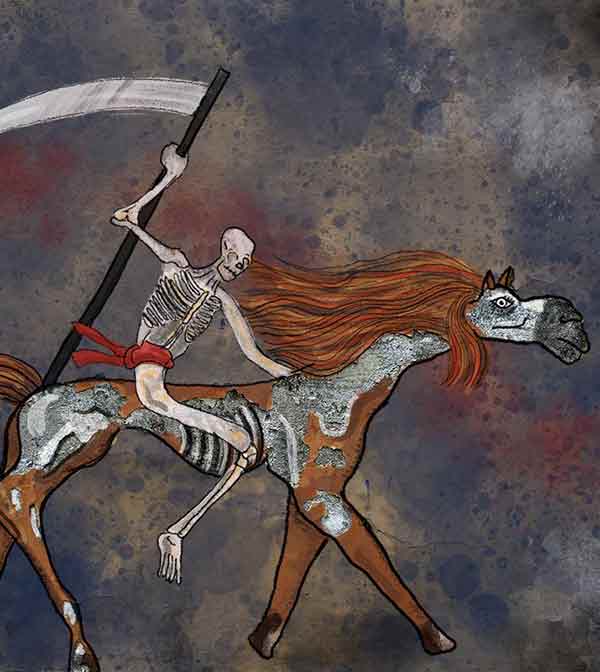
THE TRIUMPH OF DEATH
There are almost 300 examples of it including macabre dances.
This macabre iconography in some cases anticipates the Black Death of 1348, which decimated the European population by filling cities with corpses, and in others is a direct consequence of it.
If in the works before the fateful plague the triumph of death is more connected with the theme of the Last Judgment, sometimes correlated with a representation of Paradise and Hell linked to Dante’s description, in the later works death itself begins to appear “gratuitously” decimating the population, in a desolate vision not necessarily connected with the theme of salvation, but rather these are fanciful reworkings of what was a tremendous collective experience.
This work on the stain is based on the fresco of the Triumph of Death in Palermo, dated 1446
—————–
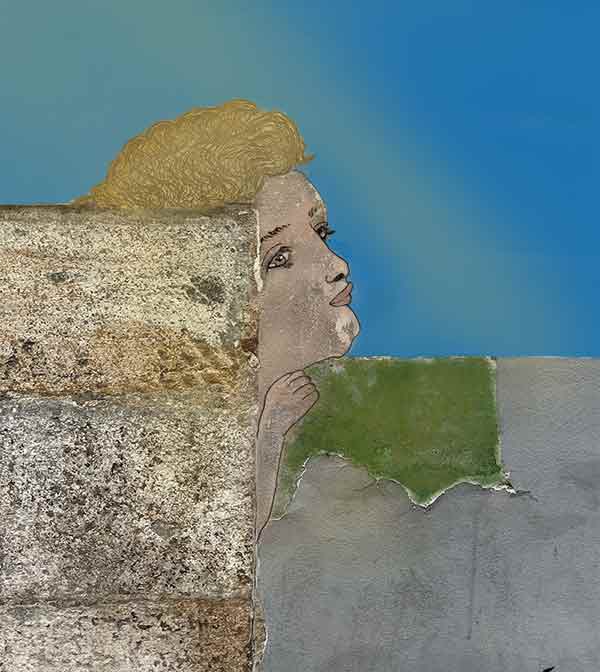
PARADISE - ANGEL, RAFFAELLO
—————–
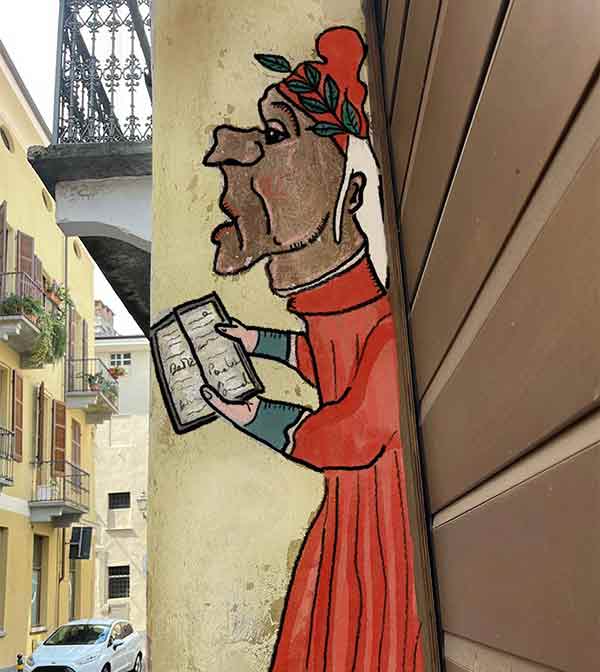
PARADISE - DANTE
—————–
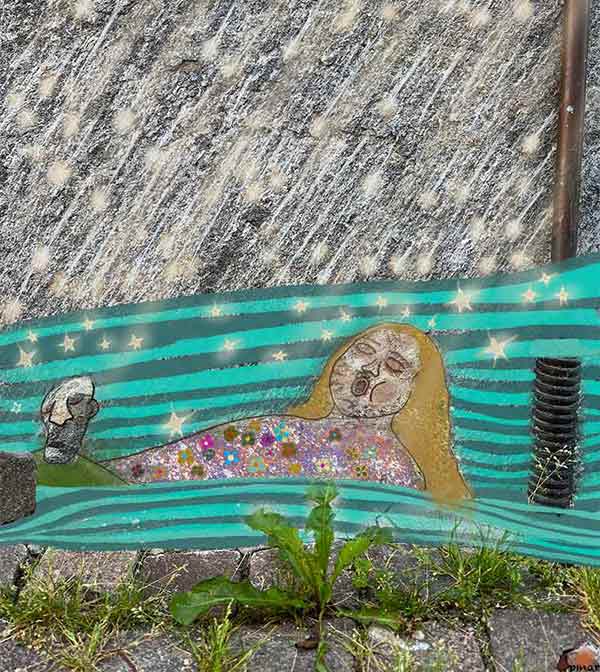
PARADISE - BLISSFUL SLEEP
Here a blissful sleep under a shower of Stars.
—————–

PARADISE - GOD
—————–

Venus
Here in Cuneo is the Gondolo della Riva family, an ancient Cuneo family originally from Peveragno.
Carved on the wooden doorway are a gondola and a star, the family’s coat of arms, and the motto “Hac Duce Perge Viam” (With this star for a guide, set out on your way), but also a seashell symbolizing in part fertility but also protection.
Botticelli took inspiration from this very place for this element so fundamental in his masterpiece.
—————–
WE GIVE THE NUMBERS ON THE ROUTE!
Following are some data characterizing the course taken in Cuneo.














